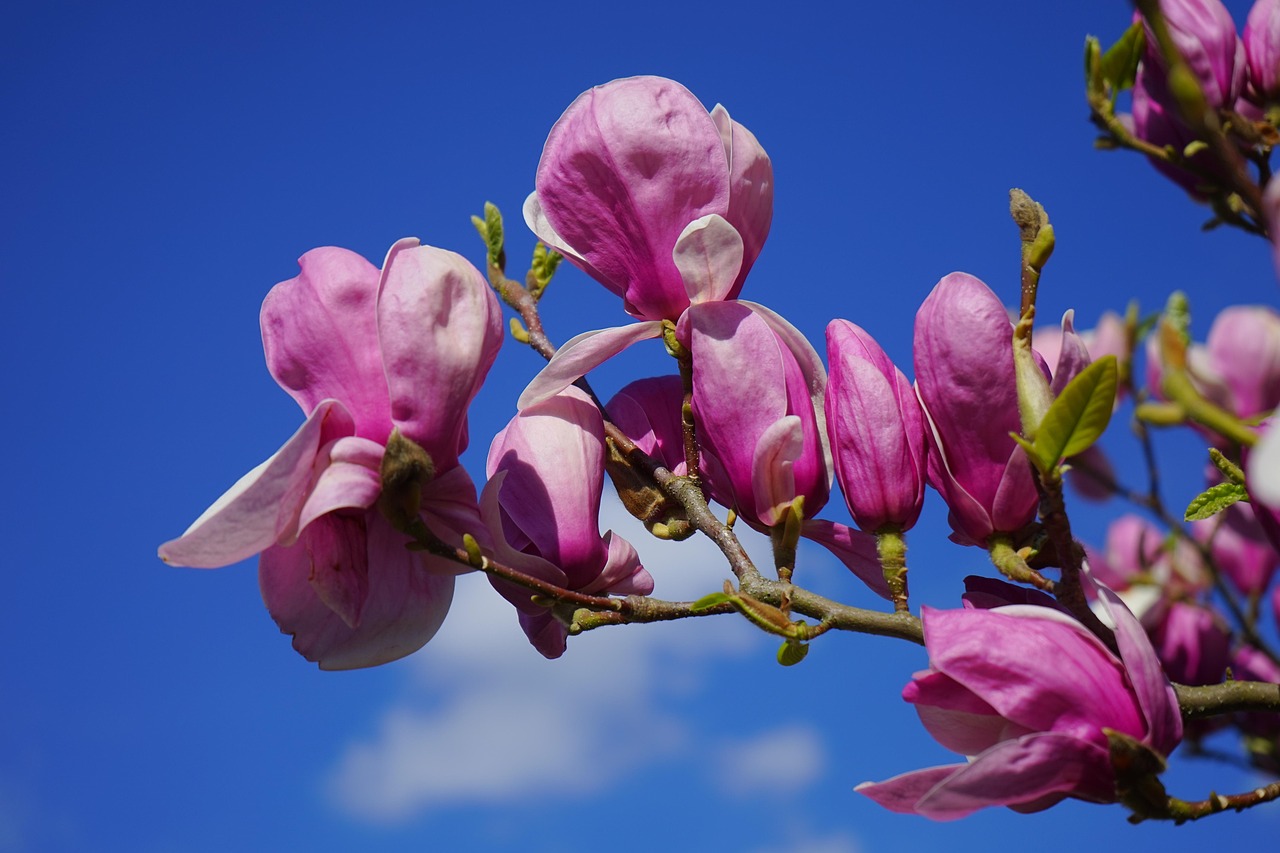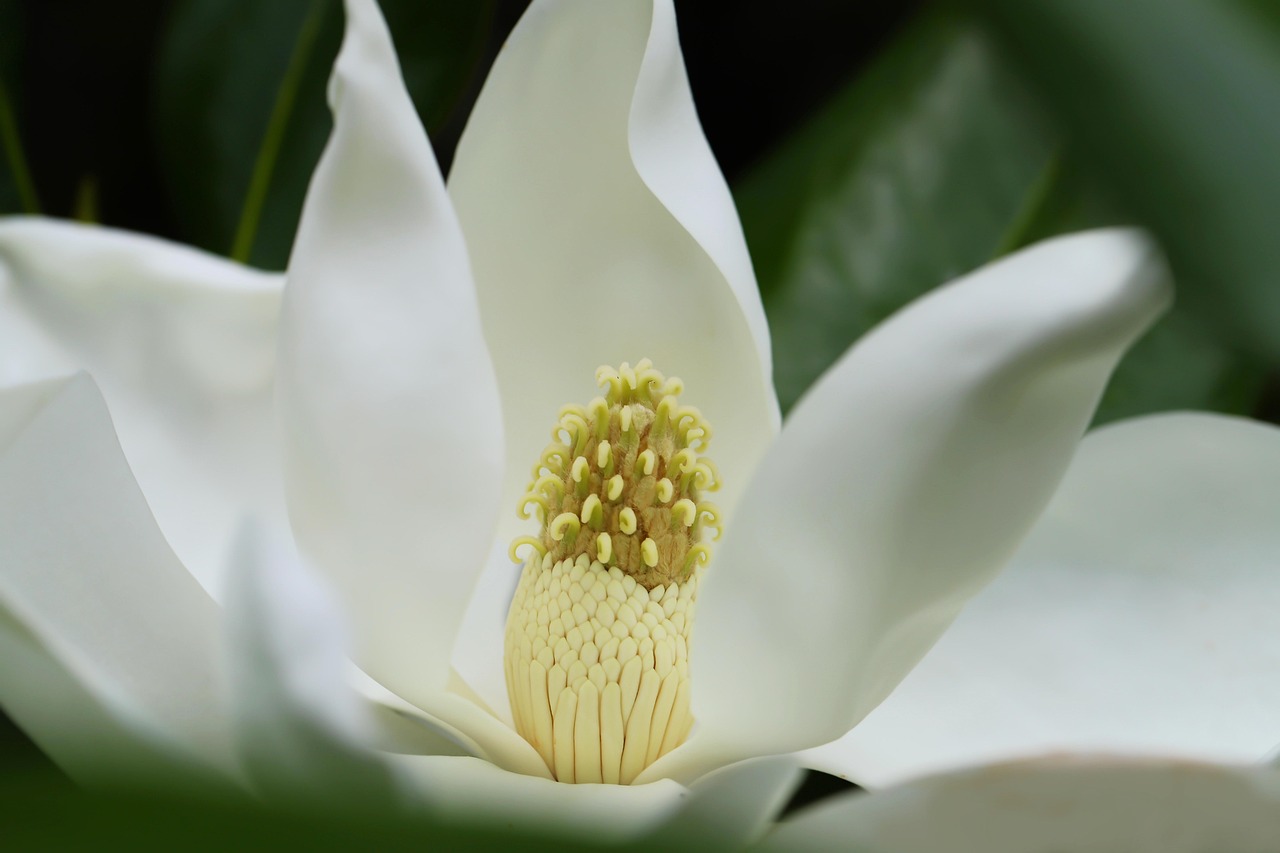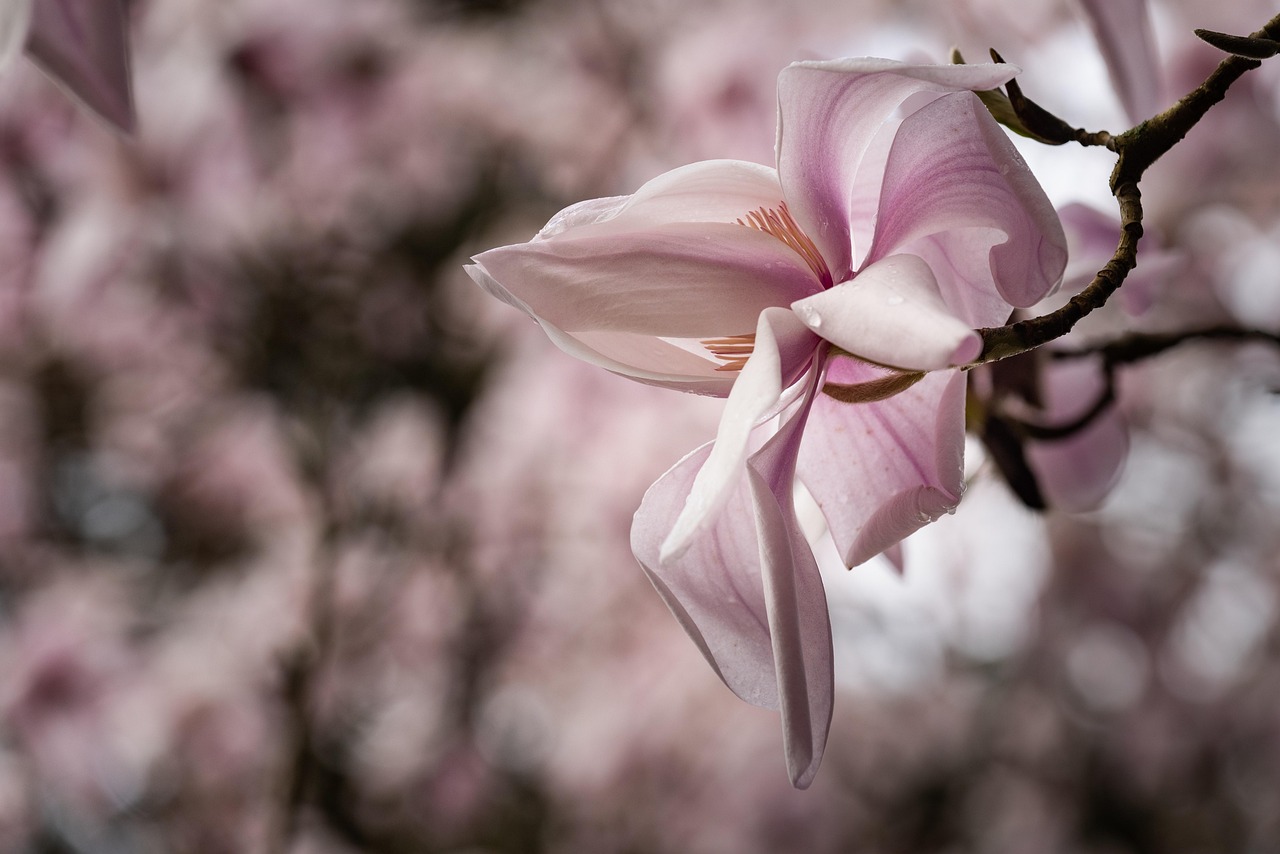Magnolia trees typically experience a moderate growth rate, averaging 1 to 2 feet per year. This growth rate is essential for landscape planning, as it influences tree placement, spacing, and the overall design of outdoor spaces.
When planning a landscape, understanding the growth characteristics of plants is crucial. Magnolia trees, with their stunning blooms and lush foliage, are popular choices for many gardens and landscapes. They can add beauty and elegance while providing shade and habitat for wildlife. However, their growth rate is a significant factor to consider when deciding where to plant them and how they will fit into the overall design of the space.

Magnolia trees belong to the Magnoliaceae family, which includes a variety of species. Each species may have different growth rates and requirements. Generally, these trees can be classified into deciduous and evergreen types. The growth rates of these trees can vary based on species, soil quality, climate, and care practices. Let’s look at some common species and their average growth rates:
| Species | Common Name | Average Growth Rate (feet per year) |
|---|---|---|
| Magnolia grandiflora | Southern Magnolia | 1 to 2 |
| Magnolia stellata | Star Magnolia | 1 to 2 |
| Magnolia liliflora | Lily Magnolia | 1 to 2 |
| Magnolia x soulangeana | Saucer Magnolia | 2 to 3 |
These growth rates should be taken into account when planning your landscape. For example, if you choose a species that grows 2 to 3 feet per year, it may fill out a space more quickly than one that grows only 1 foot per year. This information helps in determining the right distance between trees and other plants for optimal growth.
Factors Affecting Magnolia Tree Growth Rates
Several factors influence how quickly magnolia trees grow. Understanding these factors can help you create an environment that promotes healthy growth.

Soil Quality
The quality of the soil where the magnolia tree is planted plays a critical role in its growth. Magnolias prefer well-drained, loamy soil rich in organic matter. Heavy clay or sandy soils can hinder growth. Soil pH also matters; a slightly acidic to neutral pH (around 5.5 to 7) is ideal for most magnolia species.
Climate Conditions
Climate conditions significantly impact the growth rate of magnolia trees. These trees thrive in USDA hardiness zones 5 through 9, depending on the species. Adequate sunlight is essential; magnolias generally prefer full sun to partial shade. Extreme weather events, such as heavy frost or drought, can stunt their growth.
Watering Practices
Proper watering is essential for healthy magnolia growth. Newly planted magnolias need consistent moisture to establish roots. Overwatering or underwatering can lead to stress, affecting their overall health and growth rate. Once established, magnolias are relatively drought-tolerant but still benefit from regular watering during dry spells.

Pest and Disease Management
Pests and diseases can also affect magnolia growth rates. Common issues include scale insects and fungal infections. Regular monitoring and proper care can prevent these problems from hindering growth. Healthy trees are more resilient to pests and diseases, allowing them to thrive in your landscape.
By understanding these factors, you can make informed decisions about planting magnolia trees in your landscape design. Taking the time to research and plan will ensure that your magnolias grow strong and beautiful, enhancing your outdoor space for years to come.
Choosing the Right Magnolia Species for Your Landscape
Selecting the appropriate magnolia species is crucial for achieving desired aesthetic and growth outcomes in your landscape. Different species have varying characteristics, growth habits, and environmental preferences. Understanding these differences can help you choose the best magnolia for your specific conditions.
Common Magnolia Species and Their Characteristics
Here are some of the most popular magnolia species along with their unique features:

| Species | Common Name | Height (feet) | Spread (feet) | Notable Features |
|---|---|---|---|---|
| Magnolia grandiflora | Southern Magnolia | 60 to 80 | 30 to 40 | Large, fragrant white flowers and glossy leaves |
| Magnolia stellata | Star Magnolia | 15 to 20 | 10 to 15 | Early spring blooms with star-shaped white flowers |
| Magnolia liliflora | Lily Magnolia | 10 to 20 | 10 to 15 | Large, tulip-shaped pink flowers in spring |
| Magnolia x soulangeana | Saucer Magnolia | 20 to 30 | 25 to 30 | Cup-shaped flowers in shades of pink and white |
When selecting a magnolia species, consider factors such as available space, desired height, and flowering characteristics. Some species are better suited for smaller yards, while others can serve as impressive focal points in larger landscapes.
Environmental Considerations for Planting Magnolias
The environment in which you plant magnolias can greatly impact their growth rates and overall health. Here are key environmental factors to consider:
- Sunlight: Magnolias generally prefer full sun but can tolerate partial shade. Full sun promotes better flowering and overall vigor.
- Wind Protection: Magnolias can be susceptible to wind damage, especially when young. Planting them in a sheltered location can help reduce stress.
- Space: Ensure adequate space for both roots and branches. Crowded conditions can lead to poor growth and increased competition for nutrients.
- Drainage: Good drainage is essential. Avoid planting in low-lying areas where water tends to pool.
By taking these environmental factors into account, you can create an ideal setting for your magnolia trees to flourish.
Caring for Your Magnolia Trees
Caring for magnolia trees involves several essential practices that promote healthy growth and flowering. Here are some key care tips:
Fertilization Practices
Fertilization is important to provide the necessary nutrients for magnolia trees. Here are some guidelines:
- Timing: Fertilize in early spring as new growth begins. This timing supports vigorous growth and flowering.
- Type of Fertilizer: Use a balanced slow-release fertilizer or one specifically formulated for trees and shrubs.
- Application: Follow package instructions for application rates to avoid over-fertilizing, which can harm the tree.
Pruning Techniques
Pruning is essential for maintaining the shape and health of magnolia trees. Here are some pruning tips:
- Timing: Prune during late winter or early spring before new growth starts.
- Focus Areas: Remove dead or damaged branches, as well as those that cross or rub against each other.
- Avoid Heavy Pruning: Magnolias do not respond well to heavy pruning. Light shaping is preferred.
With proper care, your magnolia trees will thrive, adding beauty and value to your landscape. Understanding their specific needs will ensure they grow at optimal rates while enhancing your outdoor space.
Landscape Design Considerations with Magnolia Trees
Incorporating magnolia trees into landscape designs requires careful consideration of their growth patterns and aesthetic qualities. Their impressive flowers and foliage can serve as focal points or enhance the overall theme of your outdoor space. Here are some essential design considerations when planning to include magnolia trees in your landscape.
Placement and Spacing
Proper placement and spacing of magnolia trees are critical to their long-term success. Here are some guidelines to follow:
- Distance from Structures: Maintain a distance of at least 10 to 15 feet from buildings, fences, or other structures. This space allows for proper air circulation and reduces the risk of damage to structures from falling branches.
- Spacing Between Trees: If planting multiple magnolias, space them at least 15 to 30 feet apart, depending on the species’ mature size. This spacing helps prevent competition for nutrients and sunlight.
- Visibility: Place magnolias where they can be easily viewed and appreciated, especially during their flowering season. Consider sightlines from windows and outdoor living spaces.
Combining with Other Plants
Magnolias can enhance a landscape when paired with complementary plants. Consider these combinations:
- Understory Plants: Choose lower-growing shrubs and perennials that thrive in partial shade, like ferns or hostas. These plants can help create layers in your garden.
- Color Coordination: Consider flowering plants that bloom around the same time as your magnolia. This coordination can enhance the visual appeal during peak bloom times.
- Evergreens: Plant evergreen shrubs or trees nearby for year-round interest. Evergreens can provide contrast to the deciduous nature of magnolias during fall and winter.
Seasonal Interest with Magnolia Trees
Magnolia trees offer seasonal interest that can significantly enhance your landscape throughout the year. Understanding their seasonal changes helps in planning plantings and creating a visually appealing garden.
Spring Blooms
The most notable feature of magnolias is their stunning spring blooms. Here are some details to consider:
- Flowering Period: Depending on the species, magnolias typically bloom from late winter to early spring. Their large, fragrant flowers can be white, pink, purple, or yellow.
- Attracting Pollinators: The early blooms attract bees and other pollinators, benefiting the ecosystem in your garden.
Summer Foliage
During summer, magnolia trees showcase lush green foliage. Key aspects include:
- Shade Provision: As they grow, magnolias provide ample shade, making them ideal for creating cool spots in your garden or yard.
- Aesthetic Appeal: The glossy leaves contribute to the overall beauty of the landscape, creating a rich backdrop for other plants.
Autumn Colors
In fall, magnolia trees experience subtle changes. While not as vibrant as some deciduous trees, consider the following:
- Leaf Drop: Magnolias shed their leaves in autumn, revealing their striking branch structure and trunk.
- Seed Cones: Some species produce ornamental seed cones that add interest even after the leaves have fallen.
Winter Structure
In winter, magnolia trees provide structural interest in the landscape. Important points include:
- Bare Branches: The bare branches can create beautiful silhouettes against winter skies, providing a stark contrast to snow or frost.
- Wildlife Habitat: The tree can serve as a habitat for birds searching for shelter during colder months.
By considering seasonal changes and how they contribute to your landscape design, you can make more informed decisions about where and how to plant magnolia trees. Their beauty throughout the year can enhance your outdoor space in various ways, creating a dynamic environment that evolves with each season.
Maintenance Practices for Long-Term Health
To ensure that magnolia trees thrive and maintain their beauty throughout their lives, regular maintenance is essential. Here are some key maintenance practices:
Mulching
Applying mulch around the base of magnolia trees can provide numerous benefits:
- Moisture Retention: Mulch helps retain soil moisture, reducing the frequency of watering.
- Weed Suppression: A layer of mulch can suppress weeds, reducing competition for nutrients.
- Soil Temperature Regulation: Mulch can help maintain consistent soil temperatures, protecting roots from extreme heat or cold.
Regular Monitoring
Regularly monitoring your magnolia trees is crucial for early disease detection and pest control:
- Pest Checks: Inspect leaves and branches for signs of pests like aphids or scale insects.
- Disease Awareness: Look for signs of fungal diseases, such as leaf spots or wilting.
- General Health: Monitor overall tree health, including leaf color and growth patterns.
Winter Protection
In colder climates, providing winter protection can help magnolia trees survive harsh conditions:
- Wrapping Young Trees: Consider wrapping young magnolias with burlap to protect against frost and wind damage.
- Watering Before Freezing: Water the trees before the ground freezes to ensure they have sufficient moisture during winter.
Common Challenges with Magnolia Trees
While magnolia trees are generally hardy, they can face specific challenges. Being aware of these can help you address potential issues effectively:
Pest and Disease Issues
Several pests and diseases can affect magnolia trees. Common problems include:
- Aphids: These small insects can cause leaf curling and distortion. Regular monitoring and insecticidal soap can help manage infestations.
- Scale Insects: Scale can weaken trees by sucking sap from branches. Horticultural oil can be effective in controlling these pests.
- Fungal Diseases: Magnolia trees may experience leaf spot diseases, which can lead to unsightly foliage. Good air circulation and proper watering practices can mitigate these issues.
Environmental Stressors
Magnolia trees can also suffer from environmental stressors such as drought or poor soil conditions:
- Drought Stress: During prolonged dry spells, magnolias may require additional watering to prevent stress and encourage healthy growth.
- Poor Soil Conditions: Conducting a soil test can help identify nutrient deficiencies or imbalances that may affect growth. Amend soil as needed to improve conditions.
Final Thoughts
Magnolia trees are a beautiful addition to any landscape, offering stunning seasonal displays and valuable shade. By understanding their growth rates, care requirements, and the environmental factors that influence their health, you can make informed decisions when planning your outdoor space.
The selection of the right magnolia species is crucial for achieving your desired landscape aesthetics. Each species has unique growth habits, so consider your available space and the overall design when making your choice.
Regular maintenance practices, including proper watering, fertilization, pruning, and pest management, will ensure your magnolia trees thrive for years to come. Additionally, being aware of common challenges will enable you to respond quickly to any issues that may arise.
Ultimately, with thoughtful planning and care, magnolia trees can provide lasting beauty and enjoyment in your landscape, enhancing both its value and appeal. Whether planted as focal points or integrated into a broader garden design, these magnificent trees will bring joy with their vibrant blooms and lush foliage year after year.
